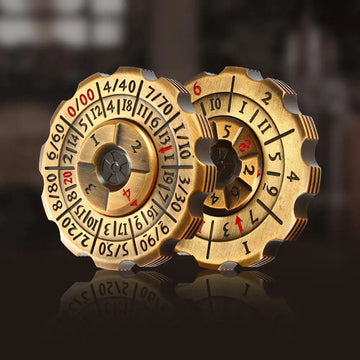Dice have been an integral part of tabletop role-playing games (TTRPGs) since the inception of Dungeons & Dragons (DND) in the 1970s. Over the decades, as both the game and its community have evolved, so too have the designs, materials, and functions of DND dice. What began as simple, utilitarian polyhedral dice has grown into an industry that combines art, technology, and craftsmanship. This article will explore how DND dice have evolved—from their classic beginnings to the cutting-edge innovations we see today.
The Early Days: Classic Polyhedral Dice
When DND was first released in 1974, players relied on basic plastic polyhedral dice to represent randomness in the game. The standard set of seven dice—D4, D6, D8, D10, D12, D20 and D%—became a hallmark of the game. These dice were often rudimentary, featuring numbers etched into simple, single-colored plastic. In those early days, players used what was available, and while these dice served their purpose, they lacked the visual appeal and diversity that players have come to expect today.
The D20, in particular, gained iconic status due to its role in determining the success of attacks, skill checks, and saving throws. Over time, players began to associate this die with the heart of the DND experience. Its use as a defining symbol for role-playing games has solidified its place in gaming culture.
Aesthetic Innovations: Artistic and Custom Dice
As the DND community grew, so did the demand for more personalized and visually appealing dice. This led to the rise of custom dice makers who offered players the opportunity to choose dice that reflected their characters' personalities or the theme of their campaign.
Gemstone and metal dice emerged as premium alternatives to the traditional plastic options. Gemstone dice, crafted from materials like amethyst, obsidian, or jade, introduced a sense of luxury to gameplay. Metal dice, on the other hand, offered a heft and durability that plastic couldn’t match, making them highly sought after by players who wanted their dice to feel as weighty and powerful as the decisions they represented.
This trend towards personalization didn’t stop at materials. Players began to seek out unique color combinations, intricate etching, and even custom symbols on their dice, transforming them from mere tools into art pieces. Dice companies now frequently collaborate with artists to create limited-edition dice sets, some of which can become valuable collectibles.
Functional Innovations: Precision, Fairness, and New Features
Beyond aesthetics, there has been a significant focus on improving the functionality of DND dice, particularly in ensuring randomness and fairness in rolls. While most casual players are content with standard dice, serious players and game masters seek dice that roll as accurately as possible. The issue of dice bias—where imperfections in the dice mold can lead to uneven weight distribution and unfair rolls—has led to the creation of precision dice.
Precision dice are machined to exact specifications, with perfect balance to ensure that each roll has an equal chance of landing on any number. These dice provide true randomness during gameplay.
In addition to precision, dice have evolved to incorporate new features. The rise of multi-functional dice, like Rule Dice's fidget spinner dice, showcases how innovation can merge functionality with player needs. These dice combine the traditional rolling function with a spinning mechanism, allowing players to reduce stress or keep their hands busy during long campaign sessions.
Technological Advancements: LED and Digital Dice
As technology has advanced, dice makers have found ways to incorporate electronics into their designs. LED dice, for example, light up on impact or when a specific number is rolled, adding an exciting visual element to gameplay. These dice often use rechargeable batteries or kinetic energy to power their lights, making them as functional as they are eye-catching.
Digital dice, which connect to apps or virtual game platforms, offer a new level of integration for online games. While these may lack the tactile feel of traditional dice, they provide ease of use for virtual campaigns and can include additional features such as dice history and roll statistics.
What’s Next: The Future of DND Dice
The evolution of DND dice is far from over. As 3D printing technology becomes more accessible, it is likely that we will see even greater customization and innovation in dice design. Players may soon be able to print their own dice at home, choosing from endless combinations of materials, colors, and designs.
Additionally, augmented reality (AR) and virtual reality (VR) could transform the way dice are used in games, blending the physical and digital worlds to create fully immersive gaming experiences. Imagine dice that not only roll but also project visual effects or interact with the game world in new and unexpected ways.
Conclusion
DND dice have come a long way from their humble beginnings. What was once a simple set of polyhedrals has evolved into a diverse range of materials, designs, and functionalities that cater to every player’s needs. Whether you’re rolling gemstone dice in a high-stakes battle or using a precision-machined metal set to ensure fairness, the innovations in dice design continue to enhance the role-playing experience for players around the world.
The future of DND dice promises even more exciting advancements, and as players continue to seek unique ways to express their characters and improve their games, the evolution of dice will undoubtedly continue. As technology and creativity collide, we can only imagine the possibilities that await in the next era of DND dice.

